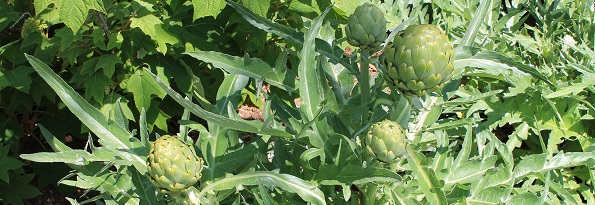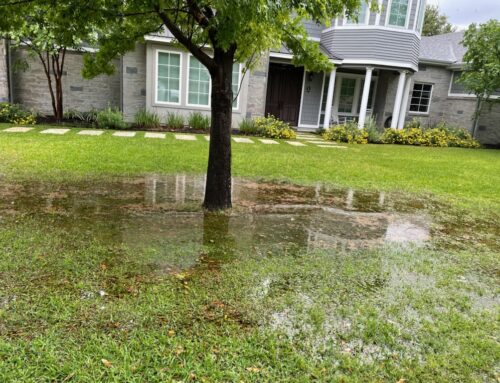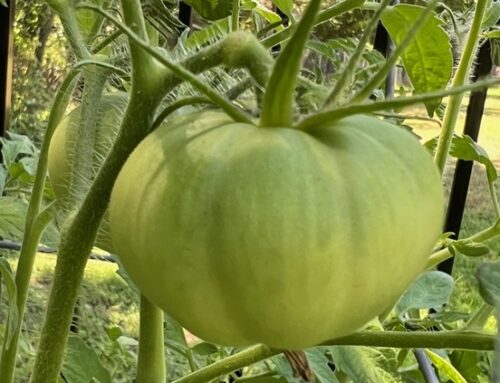Artichokes are actually a thistle native to the Mediterranean. Like many plants from the Mediterranean, they require well-drained soils, and produce best in deep, fertile soils. Adding compost to sandy or clay soils will improve the drainage and fertility of the soil.
Choose a location in full sun, and space plants 3’-4’ apart, as the plants will grow quite large. ‘Green Globe’ is a variety that does well in Central Texas, and are usually readily available at planting time. You can plant crowns in January, or container-grown stock later in the spring. Hardy to Zone 7, they will require protection if the temperatures drop into the mid 20’s.
Artichokes require ample water for a good harvest, and regular irrigation in the summer will help keep the temperatures in the crown of the plant cool and prevent the bud from opening until ready to pick. Mulching the plants will help conserve moisture and keep weeds at bay. Moisture stress results in “black tip” on the leaves, but does not affect the edible bud.
Artichokes usually take about 100-150 days to harvest from crowns planted in January. Fertilize your artichokes regularly with Fox Farm ‘Kelp Me Kelp You’ liquid seaweed. Make the first application to the soil as soon as you plant, then follow-up with foliar applications every two weeks during the growing season. Artichokes have few pests, but keep a look out for earwigs, aphids, and caterpillars. Use Captain Jack’s Deadbug Brew for caterpillars and Safer Insecticidal Soap for aphids. Diatomaceous earth may help control the earwigs.
Artichokes usually produce 6-9 buds per plant. The main harvest is usually in April to May. Buds are ready to harvest when the heads are tightly closed, and the outside squeaks slightly when rubbed. The stem should be cut 2”-4” below the bud.
(We recommend removing the buds the first year to allow the plant to grow and mature. Artichokes are perennial plants, and will return annually if not exposed to winter temperatures in the 20’s. Be sure to cover with straw, mulch or a tarp if temperatures drop into the 20’s. Plants that are 3-5 years old often benefit from division if they become crowded in order to to avoid a decrease in production.)
Once the harvesting is done in June, cut the entire plant back to 1”-2” off the ground. The plant will go dormant for the summer, then begin growth again in the fall. (Sometimes the plant will re-sprout from the base and produce a second harvest, depending on the weather.) Plants should be continued to be watered, even though dormant. The new side-shoots that emerge in the fall can be transplanted to another location, leaving the most vigorous shoot for production next spring.
If you have ever seen an Artichoke bud open to a flower, you will know that missing a few in “tight bud” can be rewarding as well! The vibrant purple of the thistle flower is a sight to behold-and may be used as a cut flower in arrangements.





Leave A Comment